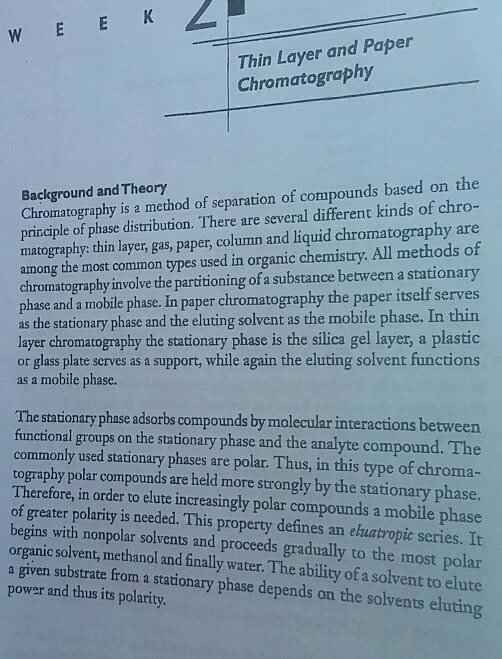CHEM 233 Lecture Notes - Lecture 5: Cengage Learning, Aldehyde, Thin-Layer Chromatography
Document Summary
Chromatographic methods: separation of dyes and spinach pigments by column and. The purpose of this lab was to get familiar with techniques of column chromatography and thin- layer chromatography. Also, this lab helps to understand the relationship between solvent polarity (dielectric constant) and eluting power in chromatography. The other purpose was to identify the effect of functional groups on retention time (elutropic series). The methods, column chromatography and thin-layer chromatography, used in this lab helps to observe the effects of polarity of the solvent, eluting power, and adsorbent in the separation of dyes and spinach pigments. These procedures include separation of mixtures of solutions into its components. The column chromatography is used for separation in the dye containing 1: 1 methylene blue and methyl orange. The thin-layer chromatography is used for separation of spinach pigments. Rco2h > roh > rhn2 > rr"c=o > rco2r" > ror" > c=c > r-x. Figure 1: elutropic series for polar stationary phases.


